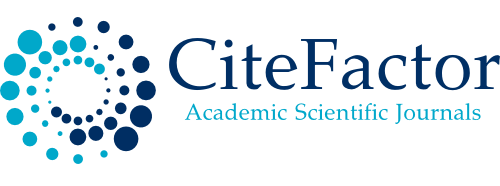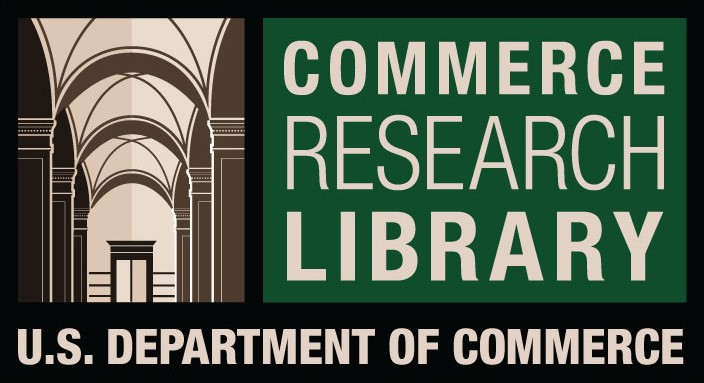IMPACT OF KNOWLEDGE SHARING BEHAVIOR ON PERFORMANCE OF AUDITING FIRMS IN PAKISTAN: MODERATING ROLE OF ORGANIZATIONAL CULTURE
DOI:
https://doi.org/10.61841/xadqqs23Keywords:
Organizational culture (OCL), Knowledge sharing behavior (KSB, perceived performance (PPER)Abstract
The aim of this study is to assess how the perceived performance of audit firms is affected by knowledge sharing behaviour (KSB). Additionally, the role of effective organizational culture as a moderator in determination of the intensity of the relationship between KSB and perceived performance is also assessed. For this purpose, data was collected from audit personnel of the big 4 audit firms as well as other “A” ranked accountancy firms in Pakistan via purposive sampling. The survey method which was used was the cross sectional method. Multiple regression and PROCESS macros(Hayes, 2013) were used and analysis of 207 valid responses was done through the use of SPSS software The results obtained were quite revealing in the sense that they showed significant relationship between knowledge sharing behavior and the three dimensions related to it i.e. organizational communication, personal communication as well as communities of practice with organization’s perceived performance. However, no significant relationship was found to exist between written communication and knowledge sharing behavior. At the same time, effective organization culture had a moderating role on the relationship between written communication and organizational communication with organizational perceived performance. This study focused on one type of culture within the auditing firms but it should be taken into account that this is the initial step towards the investigation of the link which KSB and its distinct dimensions have with predicting the performance of eastern audit firm context while considering the role of culture at the same time. Fostering knowledge sharing by the management and the auditors for the improvement of audit practice and the development of a conducive culture for facilitating knowledge sharing.
Downloads
References
1. Alavi, M. and Leidner, D.E., (2001), “Knowledge management and knowledge management systems: Conceptual foundations and research issues”, MIS quarterly, Vol. 25 No.1, pp.107-136.
2. Akhavan, P., Rahimi, A. & Mehralian, G. (2013). Developing a model for knowledge sharing in research centers, Vine, 43(3), 357-393.
3. Aldamen, H., Duncan, K., Kelly, S., McNamara, R. & Nagel, S. (2012). Audit committee characteristics and firm performance during the global financial crisis. Accounting & Finance, 52(4), 971-1000.
4. Ardichvili, A., Page, V. & Wentling, T. (2003). Motivation and barriers to participation in virtual knowledge-sharing communities of practice. Journal of knowledge management,1 (7), 64-77.
5. Arel, B., Brody, R.G. & Pany, K., (2005). Audit firm rotation and audit quality. The CPA Journal, 75(1), 36.
6. Argote, L. & Ingram, P. (2000). Knowledge transfer: A basis for competitive advantage in firms. Organizational behavior and human decision processes, 82(1),150-169.
7. Bartol, K. M. & Srivastava, A. (2002). Encouraging knowledge sharing: The role of organizational reward systems. Journal of Leadership & Organizational Studies, 9(1),64-76.
8. Cabrera, A. & Cabrera, E. F. (2002). Knowledge-sharing dilemma. Organization studies,23(5),687-710.
9. Chang, C.L.H. & Lin, T.C. (2015). The role of organizational culture in the knowledge management process. Journal of Knowledge management, 19(3),433-455.
10. Chen, L. Y. & Barnes, F. B. (2006). Leadership behaviors and knowledge sharing in professional service firms engaged in strategic alliances. Journal of Applied Management and Entrepreneurship,11 (2), 51.
11. Chow, C. W., Ho, J. L., & Vera-Munoz, S. C. (2008). Exploring the extent and determinants of knowledge sharing in audit engagements. Asia-Pacific Journal of Accounting & Economics, 15(2),141- 160.
12. Collins, C.J. & Smith, K.G., (2006). Knowledge exchange and combination: The role of human resource practices in the performance of high-technology firms. Academy of management journal, 49(3),544-560
13. Connelly, C.E. & Kevin, K. E. (2003). Predictors of employees’ perceptions of knowledge sharing cultures. Leadership & Organization Development Journal,24(5),294-301.
14. Cook, C. W. & Hunsaker, P. L. (2001). Management and organizational behavior, McGraw-Hill/Irwin.
15. Cronbach, L. J. (1951). Coefficient alpha and the internal structure of tests/ psychometrika, 16(3), 297- 334.
16. Danish, R. Q., Munir, Y., & Butt, S. S. D. (2012). Moderating role of organizational culture between knowledge management and organizational effectiveness in service sector. World Applied Sciences Journal, 20(1), 45-53.
17. Davenport, T. H. & Prusak, L. (1998). Working knowledge: How organizations manage what they know. Harvard Business Press.
18. De Long, D.W. & Fahey, L., (2000). Diagnosing cultural barriers to knowledge management. Academy of Management Perspectives, 14(4),113-127.
19. Deloitte. (2016). Firm Profile. Retrieved from: http://www2.deloitte.com/pk/en/pages/about- deloitte/articles/firm-leadership.html.
20. Devi, A. and Devi, S. (2014), “Audit Expectation Gap between Auditors and Users of Financial Statements”, European Journal of Business and Management, Vol. 6 No.14, pp. 75-82.
21. Giampaoli, D., Ciambotti, M. & Bontis, N., (2017). Knowledge management, problem solving and performance in top Italian firms. Journal of Knowledge Management, 21(2), 355-375
22. Giampaoli, D., Ciambotti, M. & Bontis, N., (2017). Knowledge management, problem solving and performance in top Italian firms. Journal of Knowledge Management, 21(2),355-375.
23. Gurteen, D. (1999). Creating a knowledge sharing culture. Knowledge Management Magazine, 2(5),1- 4.
24. Harlow, H., (2008). The effect of tacit knowledge on firm performance. Journal of knowledge management, 12(1),148-163.
25. Haroon, H. & Malik, H.D. (2018). The Impact of Organizational Communication on Organizational Performance. Journal of Research in Social Sciences (JRSS), 6(2),140-151.
26. Hatmaker, D.M., Park, H.H. & Rethemeyer, R.K., (2011). Learning the ropes: Communities of practice and social networks in the public sector. International Public Management Journal, 14(4), 395-419.
27. Hayes, A. F. (2013). Introduction to mediation, moderation, and conditional process analysis: A regression-based approach. Guilford Press.
28. Henttonen, K., Kianto, A. & Ritala, P., (2016). Knowledge sharing and individual work performance: an empirical study of a public sector organisation. Journal of Knowledge Management, 20(4), 749-768.
29. Hotho, J.J., Lyles, M.A. & Easterby‐Smith, M., (2015). The mutual impact of global strategy and organizational learning: Current themes and future directions. Global Strategy Journal,5(2), 82-112.
30. Heizmann, H. (2009). Knowledge sharing through communities of practice: Exploring the cross cultural interface. In Proceedings of International Conference on Organizational Learning, Knowledge and Capabilities (OLKC). Amsterdam: The Netherlands.
31. Huselid, M. A. (1995). The impact of human resource management practices on turnover, productivity, and corporate financial performance. Academy of management journal, 38(3), 635-672.
32. Imam, A., Abbasi, A. S., Muneer, S., & Qadri, M. M. (2013). Organizational culture and performance of higher educational institutions: The mediating role of individual readiness for change”, European Journal of Business and Management, 5(20), 23-34.
33. Ipe, M. (2003). Knowledge sharing in organizations: A conceptual framework. Human Resource Development Review,2(4),337-359.
34. Islam, Z., Hasan, I., Ahmed, S. & Ahmed, S., (2011). Organizational culture and knowledge sharing: Empirical evidence from service organizations. African Journal of Business Management, 5(14), 5900- 5909.
35. Jacks, T., Wallace, S. & Nemati, H. (2012). Impact of culture on knowledge management: a meta- analysis and framework. Journal of Global Information Technology Management, 15(4), 8-42.
36. Jones, G. & George, J. (2015). Contemporary management. McGraw-Hill Higher Education.
37. Käser, P. A. & Miles, R. E. (2001). Knowledge Activists: The Cultivation Of Motivation and Trust Properties of Knowledge Sharing Relationships. Paper presented at the Academy of management proceedings.
38. Kayworth, T., &Leidner, D. (2004). Handbook on Knowledge Management. Springer.
39. Kim, S. (2005). Individual-level factors and organizational performance in government organizations. Journal of public administration research and theory, 15(2), 245-261.
40. Kirkman, B. L., & Rosen, B. (1999). Beyond self-management: Antecedents and consequences of team empowerment. Academy of Management Journal,42(1),58-74.
41. KPMG. (2016). Home of KPMG. Retrieved from: http://www.kpmg.com/PK/EN/Pages/default.aspx
42. Kubo, I., Saka, A. & Pan, S. L. (2001). Behind the scenes of knowledge sharing in a Japanese bank”, Human Resource Development International, 4(4),465-485.
43. Landry, R., Saïhi, M., Amara, N.,& Ouimet, M. (2010). Evidence on how academics manage their portfolio of knowledge transfer activities. Research Policy, 39(10),1387-1403.
44. Lengnick-Hall, M. L. & Moritz, S. (2003). The impact of e-HR on the human resource management function. Journal of Labor Research. 24(3),365-379.
45. Liu, S., Liu, Q. & Chen, G.M., (2006). Through the lenses of organizational culture: A comparison of state-owned enterprises and joint ventures in China. China Media Research, 2(2),15-24.
46. Malone, C. F. & Roberts, R. W. (1996). Factors associated with the incidence of reduced audit quality behaviors. Auditing, 15(2),49.
47. Martin, J. & Frost, P. (2011). Sociology of organizations: Structures and relationship. Sage.
48. Mason, D .& Pauleen, D.J. (2003). Perceptions of knowledge management: a qualitative analysis”, Journal of Knowledge Management. 7(4),38-48.
49. Masood, A. & Afzal, M., (2016). Determinants of Audit Quality in Pakistan. Journal of Quality and Technology Management, 7(2), 25-49.
50. Meyerhoff, M. &Strycharz, A. (2013). Communities of practice. The handbook of language variation and change, 428-447.
51. Nunnally, J. C. (1967). Psychometric theory. New York: McGraw-Hill Book company.
52. Paino, H., Ismail, Z. & Smith, M. (2010). Dysfunctional audit behaviour: an exploratory study in Malaysia. Asian Review of Accounting,18(2),162-173.
53. Pallant, J. (2013). SPSS survival manual. UK: McGraw-Hill Education.
54. Park, S. & Jung, J. (2009). A Case Study on Knowledge Management of Busan Metropolitan City. Advances in Developing Human Resources, 13(1), 388-398.
55. Podsakoff, P. M., MacKenzie, S. B., Lee, J.-Y. & Podsakoff, N. P. (2003). Common method biases in behavioral research: a critical review of the literature and recommended remedies. Journal of applied psychology, 88(5),879.
56. PricewaterhouseCoopers. (2016). About Us. Retrieved from: http://www.pwc.com.pk/en/about- us.html.
57. Ramadani, V., Abazi-Alili, H., Dana, L.P., Rexhepi, G. & Ibraimi, S., (2017). The impact of knowledge spillovers and innovation on firm-performance: findings from the Balkans countries. International Entrepreneurship and Management Journal, 13(1),299-325.
58. Ritala, P., Olander, H., Michailova, S. & Husted, K., (2015). Knowledge sharing, knowledge leaking and relative innovation performance: An empirical stud. Technovation,35,22-31.
59. Schultze, U. & Leidner, D. (2002). Studying knowledge management in information systems research: discourses and theoretical assumptions. MIS Quarterly, 26(3), 213-242.
60. Senge, P. M. (1997). The fifth discipline. Measuring Business Excellence, 11(3), 46-51.
61. Syed-Ikhsan, S. and Rowland, F. (2004). Knowledge management in a public organization: a study on the relationship between organizational elements and the performance of knowledge transfer. Journal of knowledge management, 8(2), 95-111.
62. Teece, D.J. (2000). Managing Intellectual Capital. Oxford: Oxford University Press.
63. Teece, D.J. (2003). Knowledge and competence as strategic assets. in Holsapple, C.W. (Ed.), Handbook on Knowledge Management, Volume 1: Knowledge Matters, Springer-Verlag, Heidelberg, 129-152.
64. Vera-Munoz, S.C., Ho, J.L. and Chow, C.W., 2006. Enhancing knowledge sharing in public accounting firms. Accounting Horizons, 20(2), pp.133-155.
65. Wang, Z., & Wang, N. (2012). Knowledge sharing, innovation and firm performance. Expert systems with applications, 39(10), 8899-8908.
66. Weick, K., (2005). Managing the Future: Foresight in the Knowledge Economy. Academy of Management Review, 30(4), 871−873
67. Whelan, E. & Carcary, M. (2011). Integrating Talent and Knowledge Management: Where are the Benefits?. Journal of Knowledge Management, 15, 675-687.
68. Wickramasinghe, V. & Widyaratne, R. (2012). Effects of interpersonal trust, team leader support, rewards, and knowledge sharing mechanisms on knowledge sharing in project teams. Vine, 42(2), 214- 236.
69. Woo, S., Jang, P. & Kim, Y. (2015). Effects of intellectual property rights and patented knowledge in innovation and industry value added: A multinational empirical analysis of different industries. Technovation, 43,49-63.
70. Yi, J. (2009). A measure of knowledge sharing behavior: scale development and validation”, Knowledge Management Research & Practice,7(1), 65-81.
71. Zack, M., McKeen, J. & Singh, S., (2009). Knowledge management and organizational performance: an exploratory analysis. Journal of knowledge management, 13(6), 392-409.
Downloads
Published
Issue
Section
License

This work is licensed under a Creative Commons Attribution 4.0 International License.
You are free to:
- Share — copy and redistribute the material in any medium or format for any purpose, even commercially.
- Adapt — remix, transform, and build upon the material for any purpose, even commercially.
- The licensor cannot revoke these freedoms as long as you follow the license terms.
Under the following terms:
- Attribution — You must give appropriate credit , provide a link to the license, and indicate if changes were made . You may do so in any reasonable manner, but not in any way that suggests the licensor endorses you or your use.
- No additional restrictions — You may not apply legal terms or technological measures that legally restrict others from doing anything the license permits.
Notices:
You do not have to comply with the license for elements of the material in the public domain or where your use is permitted by an applicable exception or limitation .
No warranties are given. The license may not give you all of the permissions necessary for your intended use. For example, other rights such as publicity, privacy, or moral rights may limit how you use the material.









